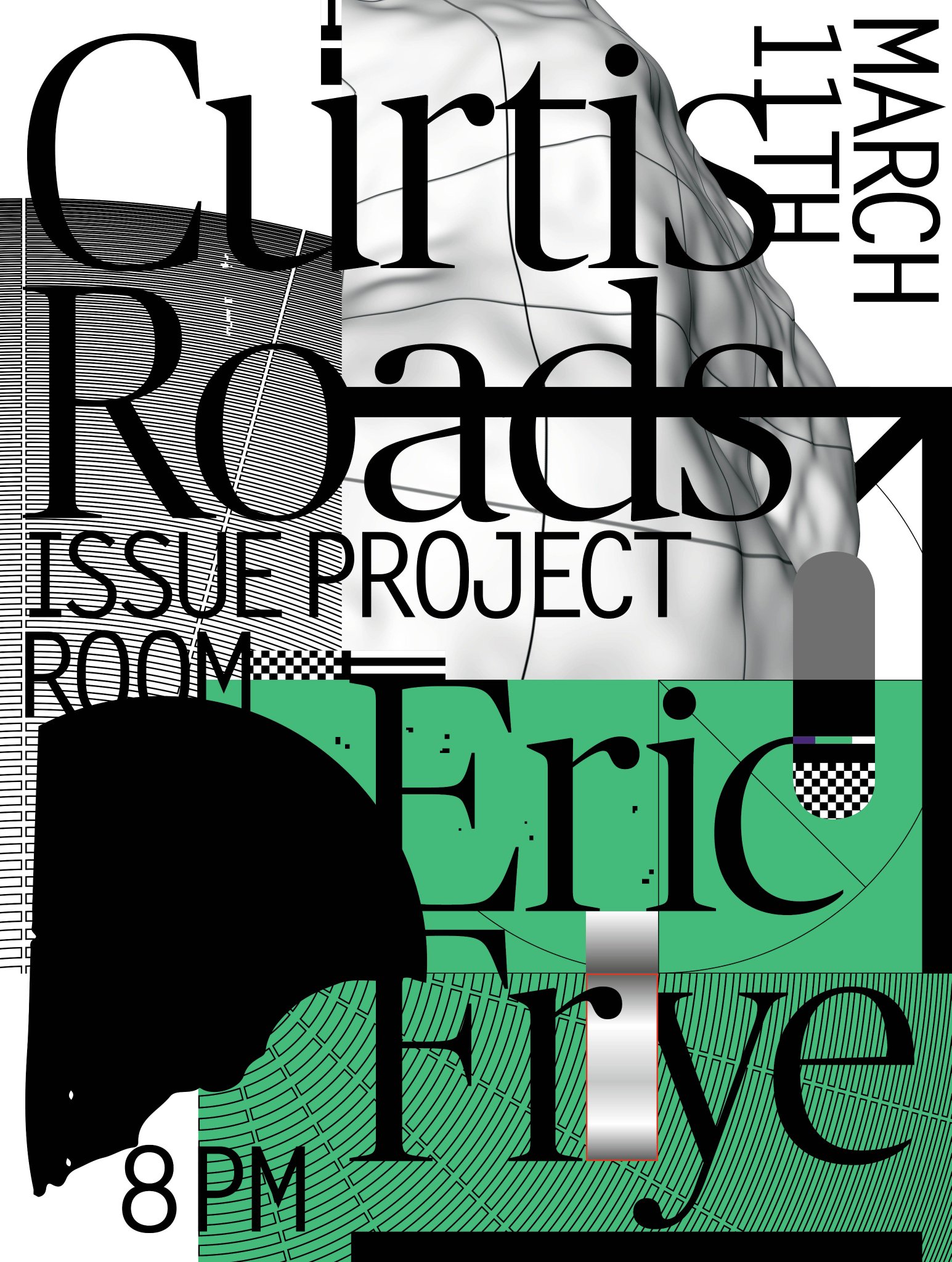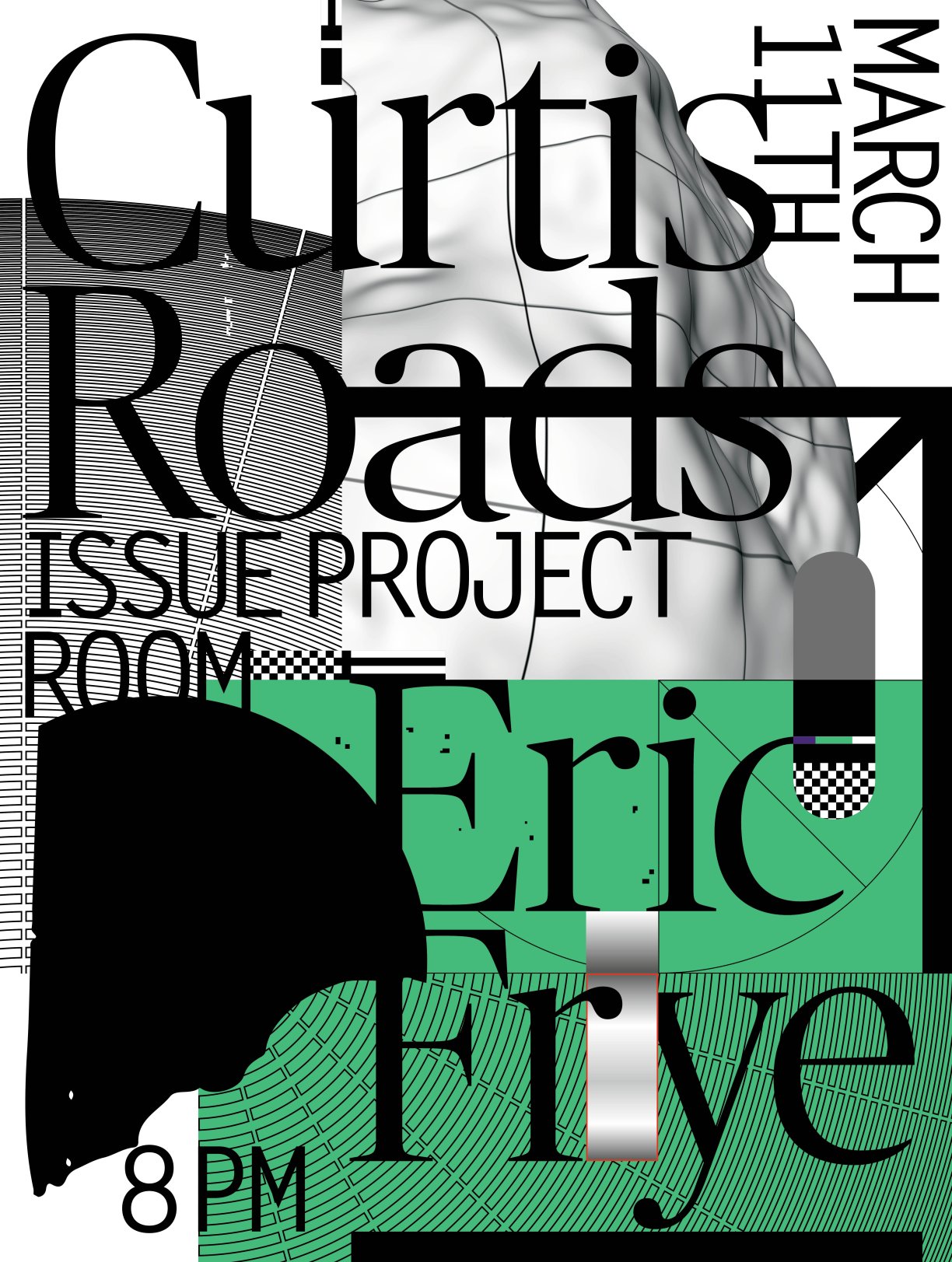Saturday, March 11th, ISSUE presents two generations of artists working in the medium of computational music: pioneering computer musician and scholar Curtis Roads and composer, artist and curator Eric Frye performing work in 4-channel sound.
Curtis Roads’ contributions to electronic music and computer music composition are vast. Roads was Editor and Associate Editor of Computer Music Journal from 1978 to 2000, and cofounded the International Computer Music Association in 1979. In addition, he has written books and anthologies including Foundations of Computer Music, The Music Machine, the textbook The Computer Music Tutorial, and Microsound, which presents the techniques and aesthetics of composition with sound particles.
For his ISSUE debut, Roads performs Flicker Tone Pulse, a dynamic audiovisual experience of finely tuned electronic and cinematic pieces he has composed since 2009 with long-time collaborator and video artist Brian O'Reilly. Roads will be showing O’Reilly’s visuals as he cultivates his purely computer generated tonalities from the “…realm of microsound, [from] sound grains first predicted in the acoustical theories of the physicist Dennis Gabor and the polymath Iannis Xenakis.”
In addition, Eric Frye performs his erudite style of uncompromising, fractured electronics that at once recall the spattered tangle of Keith Fullerton Whitman's recent generations, the digital subversions of Jeff Witscher and the incisive chimerizations of Florian Hecker. Andrée Ehresmann, Professor Émérite at Université de Picardie Jules Verne, describes Frye's work as “challenging the perception of an auditor by the dissociations of the sonic environment, the heterogeneity of the successive motives, often separated by sharp fractures and repetitions with slight modifications of multifaceted sounds, recalling ‘real-world’ sounds, but with a variance.”
Curtis Roads creates, teaches, and pursues research in the interdisciplinary territory spanning music and sound technology. He studied electronic music and computer music composition at California Institute of the Arts (CalArts) and the University of California, San Diego (UCSD) and received a Doctorate from the Université Paris 8. He was Editor and Associate Editor of Computer Music Journal (The MIT Press) from 1978 to 2000, and cofounded the International Computer Music Association (ICMA) in 1979. A researcher in computer music at MIT (1980-1986), he also worked in the software industry for a decade. He taught electronic music composition at Harvard University and sound synthesis techniques at the University of Naples. He was appointed Director of Pedagogy at Les Ateliers UPIC (later CCMIX) and Lecturer in the Music Department of the Université Paris 8. Among his books are the anthologies Foundations of Computer Music (1985, The MIT Press) and The Music Machine (1989, The MIT Press). His textbook The Computer Music Tutorial (1996, The MIT Press) is widely adopted as a standard classroom text and has been published in French (1999, second edition 2007), Japanese (2001), and Chinese (forthcoming) editions. He edited the anthology Musical Signal Processing in 1997. His book, Microsound (2001, The MIT Press) presents the techniques and aesthetics of composition with sound particles.
A pioneer in the development of granular synthesis (1974), he also developed (with Alberto de Campo) the program PulsarGenerator (2001), distributed by the Center for Research in Electronic Art Technology (CREATE) at UCSB. Another invention is the Creatovox, an expressive instrument for virtuoso performance that is based on the synthesis of sound grains and other sound particles. The Creatovox, developed in collaboration with Alberto de Campo, was first demonstrated to the public in March 2000. In 2008, CREATE released EmissionControl, a new program for sound granulation written by David Thall in consultation with Curtis Roads. His composition Clang-tint (1994) was commissioned by the Japan Ministry of Culture (Bunka-cho) and the Kunitachi College of Music, Tokyo. His music is available on compact discs produced by the MIT Media Laboratory, Wergo, OR, Mode, and Asphodel. His collection of electronic music compositions POINT LINE CLOUD won the Award of Distinction at the 2002 Ars Electronica in Linz and was released as a CD + DVD on the Asphodel label in 2005. He is keenly interested in the integration of electronic music with visual and spatial media, as well as the visualization and sonification of data. In 2004, he began researching a new method of sound analysis that is the analytical counterpart of granular synthesis called dictionary-based pursuit (DBP). His research partners include Garry Kling, Bob Sturm, Aaron McLaren, and John Shynk. This research was sponsored by the National Science Foundation in 2007-2009. Roads's new book is Composing Electronic Music: A New Aesthetic (2015) Oxford University Press. A new revised edition of The Computer Music Tutorial by The MIT Press is also in progress.
Eric Frye is a composer, artist, and curator. Exploring non-orientable sonic surfaces, Frye operates between the disciplinary boundaries of sound, philosophy, linguistics, and mathematics. His live performances and installations are focused towards a recalibrated layering of multi-channel diffusions. Simultaneously dissociative and palpable, Frye’s compositions activate an interplay between material and immaterial. His latest recording, On Small Differences in Sensation, which includes texts by Fernando Zalamea, Inigo Wilkins, Andrée Ehresmann and Mathias Béjean, was released by Copenhagen-based imprint, Cejero. His most recent curatorial endeavor, Exploring Compositional Epistemologies, a series of performances, lectures, and installations that took place at Midway Contemporary Art in Minneapolis was called "an erudite survey of the fusion of technology, composition and performance exploring the intersections of time, knowledge, self-hood and sonic space" by Mn Artists. In October 2016 Frye was artist in residence at EMS Elektronmusikstudion Stockholm. Currently, he is developing a multi-sensory performance with researcher Simone Niquille, in addition to preparing material for a solo exhibition and continuing his research at Orfield Laboratories Minneapolis. He has forthcoming releases on Anòmia, and Further Records.



